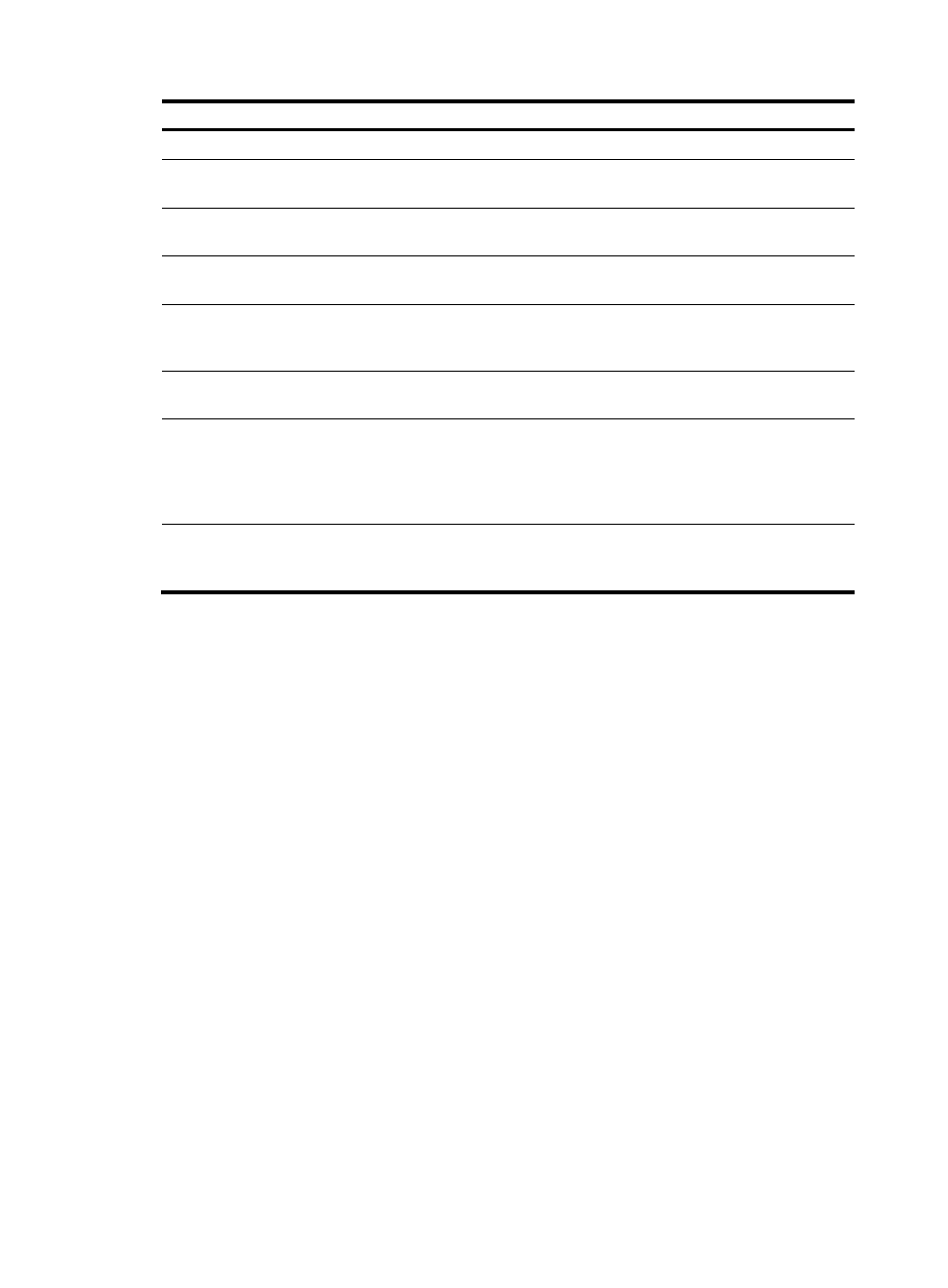H3C Technologies H3C MSR 50 User Manual
Page 635

250
Meta-character Meaning
# and *
Each indicates a valid digit.
.
Wildcard, which can match any valid digit. For example, 555…. can match any number
beginning with 555 and ending in four additional characters.
-
Hyphen (connecting element), used to connect two numbers (The smaller comes before
the larger) to indicate a range of numbers, for example, 1-9 inclusive.
[ ]
Delimits a range for matching. It can be used together with signs such as !, %, and +. For
example, [235-9] indicates one number of 2, 3, and 5 through 9.
( )
Indicates a sub-expression. For example, (086) indicates the character string 086. It is
usually used together with signs such as !, %, and +. For example, (086)!010 can match
two character strings 010 and 086010.
!
A control character, indicating that the sub-expression before it appears once or does not
appear. For example, (010)!12345678 can match 12345678 and 01012345678.
+
A control character, indicating that the sub-expression before it appears one or more
times. However, if a calling number starts with the plus sign, the sign itself does not have
special meanings, and only indicates that the following is an effective number and the
whole number is E.164-compliant. For example, 9876(54)+ can match 987654,
98765454, 9876545454, and so on, and +110022 is an E.164-compliant number.
%
A control character, indicating that the sub-expression before it appears multiple times or
does not appear. For example, 9876(54)% can match 9876, 987654, 98765454,
9876545454, and so on.
The sub-expression (one digit or digit string) before a control character such as !, +, and % can appear
for the times indicated by the control character. For example, (100)+ can match 100, 100100,
100100100, and so on. Once any number of them is matched, the match is considered an exact match.
In the longest match mode, the voice gateway ignore subsequent digits dialed by the subscriber after an
exact match.
For the case that the gateway needs to wait for subscribers to continue dialing after an exact match, refer
to the T mode.
The characters (\) and (|) are mainly used in regular expressions and cannot be used as common
characters. The character (\) is an escape character. If you want a control character to represent itself,
you need to add the escape character (\) before it. For example, (\+) represents the character (+) itself
because (+) is a control character in regular expressions. The character (|) means that the current
character (string) is the character (string) on either the left or the right. For example, 0860108888|T
means that the current character string is either 0860108888 or T.
T mode: If the character T is in the number set in a local number or call route, it means that the voice
gateway should wait for more digits until the number exceeds the maximum length or the dial timer
expires.
If a number starts with the plus sign (+), you must know what happens when you use it on a trunk: The
E&M, R2, and LGS signaling uses DTMF, and as the plus sign (+) does not have a corresponding audio,
the number cannot be transmitted to the called side successfully. While the DSS1 signaling uses ISDN,
the above problem does not exist. Therefore, you should avoid using a number that cannot be identified
by the signaling itself. Otherwise, the call will fail.
